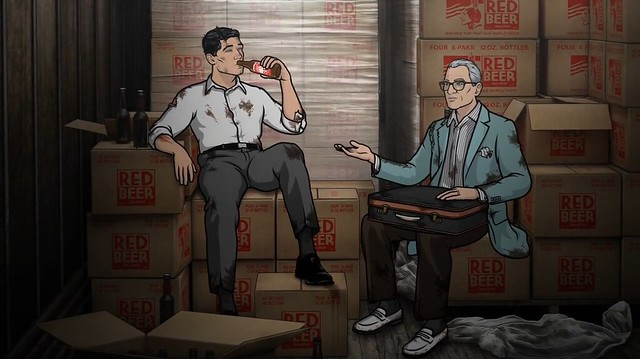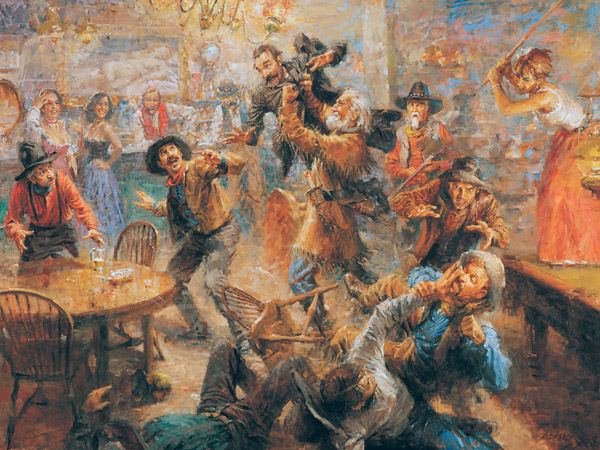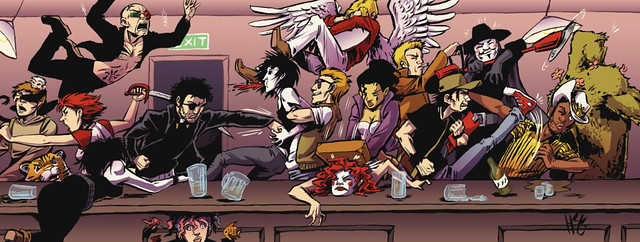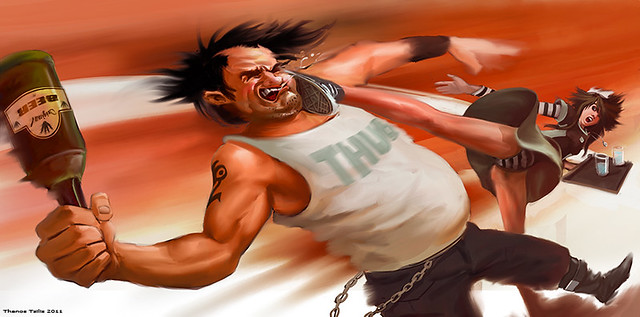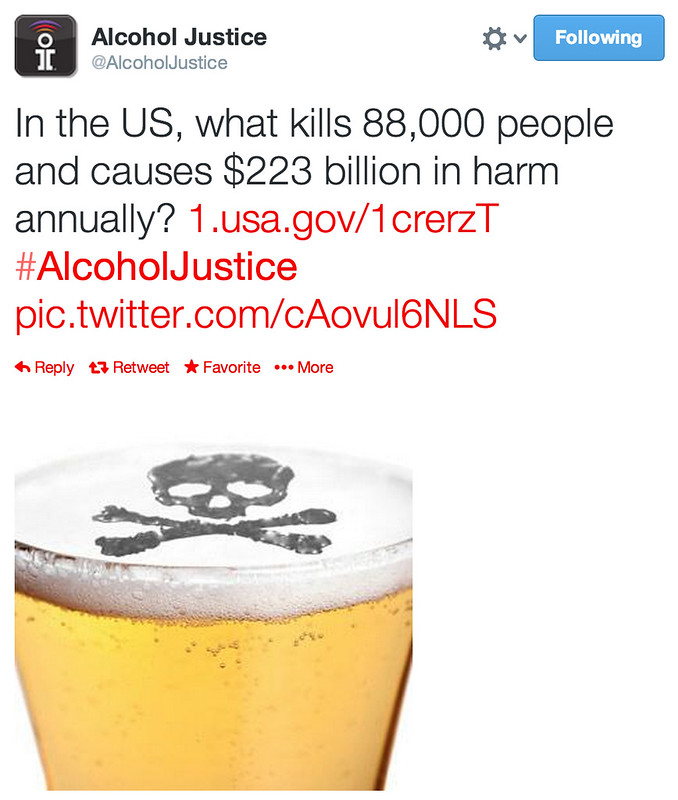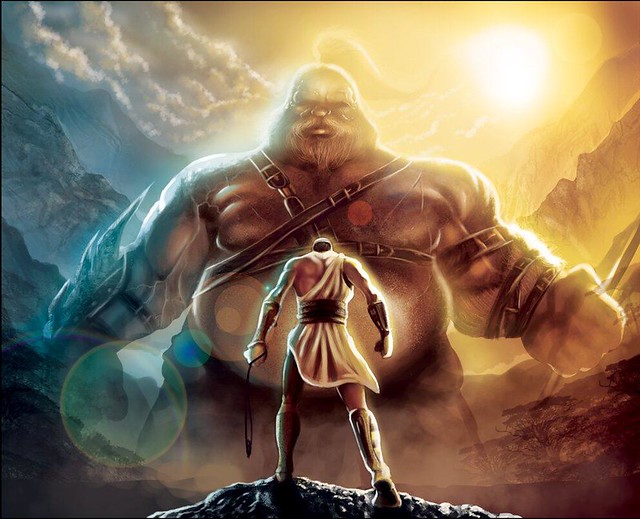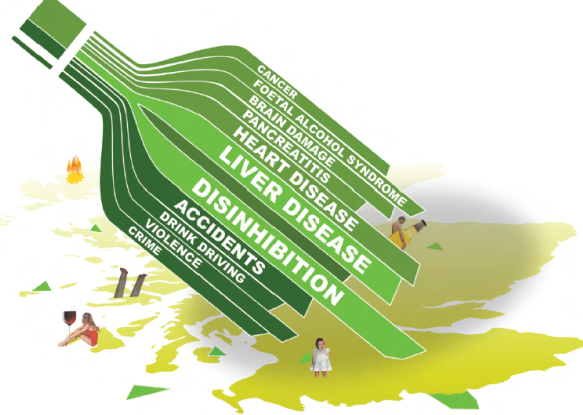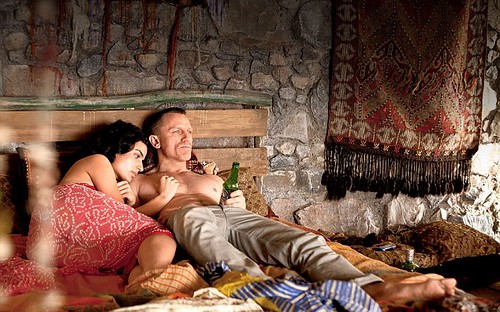
Okay, here’s a subject near and dear to my heart, and one that royally pisses me off when it’s spun this way. Eater had an article earlier this month entitled The Boozy Underbelly of Saturday Morning Cartoons, whose unfortunate title Alcohol Justice gleefully tweeted, since it plays into their propaganda machine so nicely. But the article is largely bullshit, wrapped up in questionable science and ignoring the history and reality of the subject matter.
I’ve been a cartoon lover all of my life, and still am, despite the fact that many propagandists seem to believe that cartoons are only for children, a fact easily demolished by reality. That’s the position they take time and time again whenever a cartoon — gasp — shows up on a beer label. But this nonsense is taken a step father by Sarah Baird, whose title alone is badly misleading. Many of the cartoons she refers to in her article pre-date television and many more were originally aired before a film, and later repackaged for Saturday morning television. The earliest cartoon series, from Disney, Fleischer, Warner Brothers, MGM, Lantz, Van Beuren, Terrytown and others, were created to run before a feature-length film, along with a newsreel. They were made for every movie, not just children’s movies and as such could include subject-matter that today we might consider inappropriate for kids. But instead she says:
America’s classic cartoon canon—from Walt Disney to Merry Melodies—is rife with instances of drinking and drunkenness. Whether or not we were aware of it as children, cartoons have long been just as much for adults as for kids, with tongue-in-cheek humor, satirical pop culture references, and illicit behaviors like drinking and smoking that (likely) sailed over our heads as impressionable youths.
But that’s wrong. We didn’t miss those references as kids, they were edited out of most cartoons when they were repackaged for television. Entire cartoons never made it to TV because their content wasn’t for kids, and too much might have to be cut. You can find many of these “Uncensored Cartoons,” which now exist on DVD collections, and are still rarely aired on TV. But you can more easily find these on the internet these days, not to mention because some of the ridiculous things cut are no longer considered something we need to shield our kids from.
Later she claims the reason for this is because “[t]he surprisingly adult themes broached by cartoons reflected a need to appeal to both a slapstick-loving child and a (slightly jaded) adult, as escape-hungry moviegoers young and old flocked to the theater.” No, they didn’t. They reflected what adults would find funny. People at that time rarely thought the way we do today, that we have to coddle children and protect their innocence the way we helicopter them today. If parents took their kids to a movie, they did so knowing there was a cartoon beforehand. They didn’t think, “gee, I wonder if the cartoon will be okay for my child.” And maybe it wasn’t, by today’s standards, but you can’t examine the past without addressing how they thought about this issue, and not how we think about them today. To do so is to miss a lot.
For example, she singles out Mickey Mouse.
One of the first cartoons to feature drinking hit the silver screen in 1929, just a year after seminal animation classic Steamboat Willie. The Gallopin’ Gaucho (the second-ever film to feature Mickey Mouse) shows Mickey drinking a comically large, frothy mug of beer at a cantina, guzzling it down before attempting to woo the high-heel clad Minnie.
Later in the cartoon, Mickey finds his trusty steed—an ostrich—has overindulged in beer, the spaghetti-like bird wriggling, collapsing and hiccupping much to Mickey’s chagrin. This trend of Mickey’s animal companions hitting the sauce continues during Mickey in Arabia (1937), when our hero’s pet camel slurps down the entirety of a beer barrel.
But here’s the thing. While I can’t find information about the later two, Steamboat Willie played before the film Gang War. Gang War! It’s not exactly G-rated fare. G-rated didn’t even exist until around 1968, when they no longer showed cartoons before the movie. And it is also fairly typical in the way that Arabs are portrayed, which is not particularly flattering, to say the least. The point is, these were not intended for kids.
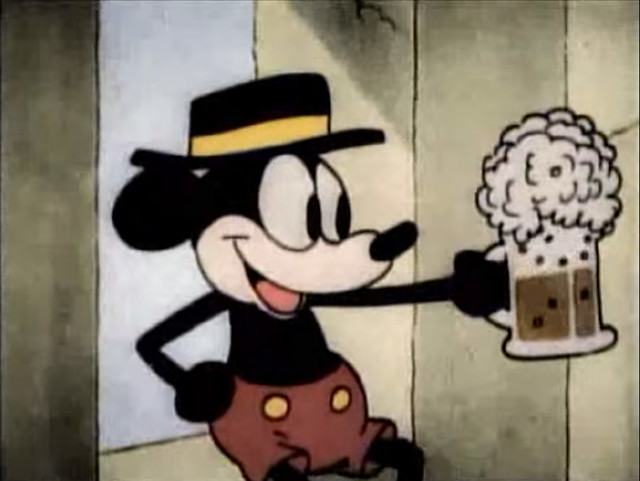
A screen capture from Gallopin’ Gaucho, and you can watch the cartoon on my earlier post Mickey Mouse Drinking A Beer.
She apparently finds support for this G-Rated nonsense from a study published in the journal Pediatrics entitled Depiction of alcohol, tobacco, and other substances in G-rated animated feature films. But in the abstract it is claimed that the “content of all G-rated animated feature films released in theaters between 1937 and 2000, recorded in English, and available on videocassette in the United States by October 31, 2000, was reviewed for portrayals of alcohol, tobacco, and other substances and their use.” But no G-Rated film existed before 1968, which is when the Motion Picture Association of America film rating system was instituted to replace the Hays Code, which had been in place since 1930. So how many of the 81 films they watched actually had a “G-Rating” and how many did they just assume did because Disney made it, or whatever other criteria they made up? It’s hard to believe people take these so-called “studies” seriously. And this was done by the Harvard School of Public Health. Here was their conclusion: “The depiction of alcohol and tobacco use in G-rated animated films seems to be decreasing over time. Nonetheless, parents should be aware that nearly half of the G-rated animated feature films available on videocassette show alcohol and tobacco use as normative behavior and do not convey the long-term consequences of this use.” Gee, I wonder if the change in regulations could account for the decrease? I wonder if the pope is catholic, too.
Yet another study — who gives these people money to do such ridiculous things? — looked at “1,221 animated cartoons … to determine the prevalence of alcohol-related content; how, if at all, the prevalence changed between 1930 and 1996.” That study, Alcohol-Related Content of Animated Cartoons: A Historical Perspective, in which their “investigation revealed that 9.3 percent of cartoons from the era have some form of alcohol-related content, but that liquor’s presence has been on a steady decline over the year.” Again, without context, they report these facts without any historical understanding of cartoons, it seems. Of course, this one was done by a grant from the National Institute of Alcohol Abuse and Alcoholism, which was created in 1970 by a senator who was a recovering alcohol so it’s not exactly unbiased. The NIAAA is looking for alcoholic links everywhere.
According to Anderson, this “data also shed light on how alcohol was most frequently depicted in cartoons, with almost half of animated characters drinking alone and showing no physical side effects to their drinking.” Um, not to be a noodge, but cartoons are, if nothing else, entertainment. Why the fu@k should they be expected to show consequences in every single case? For a majority of people who drink responsibly and in moderation, there are no consequences. Why can’t the cartoon simply be reflecting that? Because they’re not PSAs, they’re fu@king cartoons. Seriously, what is wrong with these people?
Just look at one paragraph, entitled “Reasons for drinking:”
The purported reasons for cartoon characters’ use of alcohol were rather varied. The single most common explanation of cartoon characters’ use of alcohol was that they simply enjoyed the taste of alcohol or because they liked to drink, which accounted for 12.2% of all use portrayals. The next most common reason for using alcohol was to become drunk (7.8%), followed by using alcohol to be more sociable or “to be part of the crowd” (5.6%). It is worth mentioning that in 40.0% of all alcohol use portrayals, drinking occurred for no reason whatsoever. That is, based on the cartoon’s events and the context in which the alcohol use occurred, there was no inference to be made as to why the drinking was happening.
So it basically mirrored real life. Why exactly do they seem to imply that cartoons need to explain “why the drinking was happening?” Is that necessary because it’s a cartoon? Because I’ve never heard it told that in a live action film that one must reveal every motivation behind a character’s actions.
One time the kind of Cartoon Propaganda that these folks would have approved of did air, on Tiny Toon Adventures, it was such a train wreck it was only shown one time and has since been banned, for reasons unclear to me.
Here’s their bullshit conclusion:
Ultimately, we believe that the frequent inclusion of alcohol-related content in animated cartoons, coupled with the frequently pro-drinking messages about alcohol use that the cartoons provide, combine to tell audiences that alcohol is a normal, positive aspect of life. Cartoons tell people that drinking only sometimes has an effect on the drinker and that many of the effects that are most likely to occur (e.g., hiccupping, increased happiness or sociability, increased relaxation) are positive in nature. This conclusion is quite similar to that reached by Penkoff. With these types of messages being most indicative of the kinds of things that people learn about alcohol from watching animated cartoons, it is not surprising that young people are interested in and willing to experiment with alcoholic beverages. With cartoons showing alcohol to be an acceptable, normal part of everyday living that is associated with traits that our culture values and by associating few truly negative consequences with alcohol use, why wouldn’t young people want to experiment with drinking?!
First of all, they define “frequent inclusion” by stating that “depictions of alcoholic beverages were found in 5.6%” of the cartoons, which few reasonable people would agree could be described as frequent. They seem worried about positive associations and cartoon watchers seeing some, maybe even numerous, instances of drinking where nothing bad happened. This may not fit with their world view, but it certainly reflects the reality of our society, where some people cannot handle alcohol, but where most people can and do so throughout their lives without incident. Some even grow up to be president.
One thing seems clear. When not wearing a lab coat, or not already predisposed to dislike alcohol, drinking can be, and often is, a fun and pleasant experience. And that’s the case for a majority of adults, so why wouldn’t our entertainment reflect that? Cartoons were originally designed for adults, and they continue to be made by them, too. Cartoons have always been caricatures of real life, and until some idiots foist another prohibition on us, they’ll continue to make fun of us humans, in every way imaginable. As they even admit, such drinking in cartoons has declined dramatically, again except for shows like The Simpsons and Adult Swim, which were designed for an adult or mixed adult audience.
At least the Eater author admits that cartoons have become too sterile by trying to remove anything that might rattle the little one’s delicate psyche (even if it’s more often the parent’s psyche that needs a whack upside the head). And in the end, acknowledges perhaps why cartoons continue to show character’s drinking.
At its core, there’s something that’s innately cartoon-like about being inebriated. There have been times after one-bourbon-too-many that I’ve felt as if I was Porky Pig wobbling my way home, each hiccup a tiny bubble ready to pop in front of my (blurry) nose. When inebriated, things are sillier and wonkier, as if we’re once again finding our sea legs like a cartoonish, disproportioned foal.
Exactly, cartoons do a much better job than live action at showing how we feel when we drink. And I doubt that’s going to change anytime soon. Personally, I’m going to binge-watch Archer, which is the best cartoon to depict drinking, and so much more made … well, maybe ever. It’s that good. Of course, even I won’t let my kids watch Archer … at least not yet. That’s why it airs at 11 PM and includes a disclaimer before each episode that it was made for adults. Just like the first Mickey Mouse.
